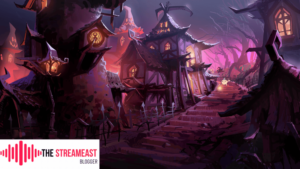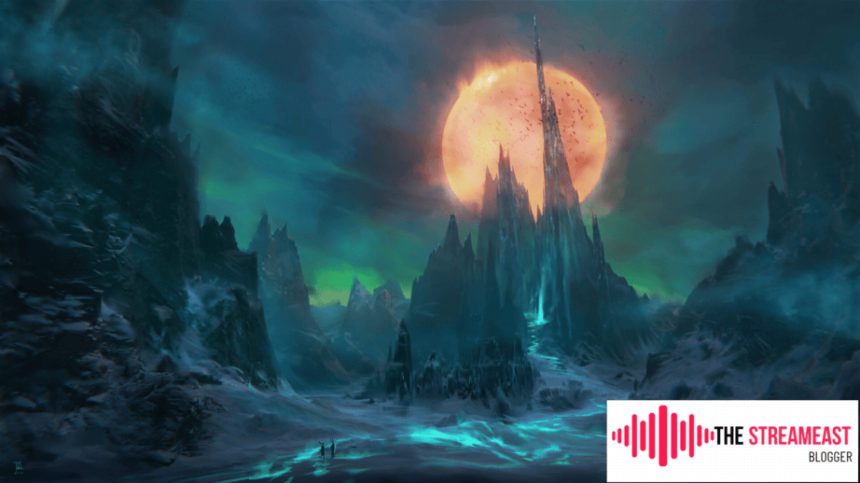Introduction
Niflheim is one of the Nine Worlds in Norse mythology, known for its cold and misty environment. This ancient realm plays a significant role in the mythological cosmos, offering a unique backdrop for the many stories and beliefs of Norse culture. This article explores Niflheim in depth, shedding light on its origins, the role it plays in Norse myths, and the characters associated with it. The information is presented in a simple, readable format for everyone to understand.
What is Niflheim?
Niflheim, also known as “The Land of Mist,” is a mystical realm in Norse mythology. Niflheim appears in Norse mythology as a world filled with ice, cold, and shadows. The name “Niflheim” comes from the Old Norse word “Nifl,” meaning “mist” or “darkness.” As one of the earliest realms in Norse cosmology, Niflheim holds endless mist, frost, and intense cold.
In Norse mythology, Niflheim lies at the lowest level of the universe, where light cannot reach. This mysterious land remains shrouded in eternal mist and darkness, creating an otherworldly setting within the Norse cosmos.
Origins of Niflheim in Norse Mythology
The creation story of Niflheim begins with the formation of the world. According to Norse mythology, there was only a vast, empty space known as Ginnungagap before anything else existed. Niflheim formed on one side of this void, while Muspelheim, the fiery realm, formed on the opposite side. The collision of the intense cold of Niflheim and the searing heat of Muspelheim sparked the creation of life.
Niflheim is not just an ancient realm; it serves a key role in shaping the Norse universe. The icy rivers of Niflheim flowed into Ginnungagap, creating the frost that formed the first beings, including Ymir, the ancestor of all giants. Niflh.eim’s rivers, known as Elivagar, are legendary in Norse myth and connect the cold realm to the rest of the Norse worlds.
The Role of Niflheim in Norse Mythology
Niflh.eim serves as an important component in Norse cosmology. It is home to the primordial frost, mist, and shadows that are a major part of the mythological stories. The icy world also holds Helheim, a section of the underworld where souls who did not die heroically reside.
In Norse beliefs, Niflh.eim is significant as it symbolizes death, endings, and the mysteries of the unknown. Its association with cold and mist signifies a place where life and warmth are absent, creating an atmosphere of mystery and fear. This eerie realm plays a prominent role in Norse eschatology because many believe it houses the roots of the World Tree, Yggdrasil.
Yggdrasil and Niflheim
The World Tree, Yggdrasil, is central to Norse mythology, and one of its roots is said to extend into Niflh.eim. This root is crucial as it taps into the wellspring of Hvergelmir, a legendary well from which numerous rivers originate. Hvergelmir is the source of all rivers in the world, connecting Niflh.eim to other realms and providing life-sustaining water.
The connection of Yggdrasil to Niflh.eim represents the balance between life and death in Norse beliefs. As the tree sustains life in other realms, its root in Niflh.eim connects it to the end of life, symbolizing the inevitable cycle of birth and death in the Norse worldview.
Helheim: The Underworld in Niflheim
Helheim, or the land of Hel, is part of Niflh.eim and serves as the resting place for souls who did not die in battle. Unlike Valhalla, where warriors slain in battle reside, Helheim serves as a somber realm for those who die from old age, illness, or other non-heroic means.
The goddess Hel, daughter of Loki, rules over Helheim. She is described as half-dead and half-alive, embodying the boundary between life and death. Helheim and Niflh.eim together signify the darker aspects of Norse mythology, symbolizing both an end and a beginning in the circle of life.
Niflheim’s Connection with Ragnarok
Ragnarok, the prophesied end of the world in Norse mythology, features Niflh.eim as a significant force in this cataclysmic event. During Ragnarok, the frozen powers of Niflh.eim merge with the fiery beings from Muspelheim to unleash the destruction of the Nine Worlds. Hel’s armies rise from Niflh.eim, marching into the final battle against the gods.
This powerful connection between Niflh.eim and Ragnarok emphasizes the realm’s importance in Norse eschatology. As a place of mist and cold, it represents the unknown and the inevitable end, making it central to the Norse understanding of the world’s fate.
The Rivers of Niflheim: Elivagar
The rivers in Niflh.eim, known as Elivagar, are significant in Norse mythology. The rivers of Elivagar flow out of the wellspring Hvergelmir, carrying dark and cold waters that embody the essence of Niflh.eim throughout the cosmos. These rivers freeze in the chilling environment of Niflh.eim and become filled with venom, emphasizing the harshness of this icy realm.
The Elivagar rivers were vital in the creation of the first beings, and they represent the relentless nature of Niflh.eim. Flowing between life and death, these rivers bridge Niflh.eim with other realms and symbolize the cold, mysterious forces of creation and destruction.
The Significance of Niflheim in Modern Interpretations
Niflh.eim has captured the imagination of many beyond ancient mythology. Today, it continues to inspire in literature, art, and popular culture. Niflh.eims often represents the unknown, the misty edges of existence, and the inevitable cycle of life and death.
Modern interpretations of Niflh.eims maintain its association with cold, mist, and mystery. In popular media, Niflh.eims often appears as a frozen realm. It is a place filled with ancient beings and unknown powers. This portrayal reminds audiences of the myths that shaped early beliefs about the world.
Understanding Niflheim’s Place in Norse Mythology
To fully appreciate the role of Niflh.eims, it’s essential to consider its place among the Nine Worlds of Norse mythology. Unlike realms such as Asgard, where gods live, or Midgard, the home of humans, Niflh.eims stands as a world shrouded in coldness and mist, separate from the life we know.
Niflh.eims is a counterbalance to fiery Muspelheim, embodying the forces of frost and shadow. It illustrates the Norse understanding of life as a balance of opposing forces, with cold and mist existing alongside warmth and light. Through this balance, the Norse cosmos remains interconnected, with each realm holding its unique place and significance.
Niflheim in Norse Mythological Texts
The Prose Edda, written by Snorri Sturluson, is one of the primary sources of information on Niflh.eims. In Norse mythology, Niflh.eims stands out as one of the earliest realms, serving as a place of both origin and finality. The icy rivers flow from Hvergelmir in Niflh.eims, creating a mysterious atmosphere. These rivers showcase the unique qualities of the realm, highlighting its cold, misty essence.
The Poetic Edda also references Niflh.eims, depicting it as a realm of mist and shadow, contrasting sharply with other worlds. Through these ancient texts, Niflh.eims remains an enduring part of Norse mythological studies, providing insight into the worldview of the Norse people.
The Mystical Imagery of Niflheim
Niflh.eim’s description as a misty, cold, and shadowy land creates powerful imagery. In Norse culture, people often associated mist with mystery and the unknown, and Niflh.eims perfectly embodies this concept. It represents a place beyond human understanding, a land where only the dead or the supernatural may tread.
The imagery of Niflh.eims is often used in art and literature to evoke feelings of mystery, fear, and reverence. Its landscape of ice and mist, combined with the chilling presence of Helheim, creates a vision of the unknown that remains impactful.

FAQs About Niflheim
What is Niflh.eims in Norse mythology?
Niflh.eims is a cold, misty realm in Norse mythology, often described as the land of darkness and shadows. It is one of the Nine Worlds and holds significant importance as the home of frost, mist, and the river Elivagar.
Why is Niflh.eims important in Norse myths?
Niflh.eims plays a key role in Norse creation myths and the story of Ragnarok. It is the origin of frost, and its rivers contributed to the creation of life. Niflh.eims is also home to Helheim, the underworld for those who did not die in battle.
Who lives in Niflh.eims?
Niflh.eims is largely uninhabited by gods or mortals. However, Hel, the goddess of death, rules over Helheim, a part of Niflh.eims, where souls who died of natural causes reside.
How is Niflh.eims connected to Yggdrasil?
One of the roots of Yggdrasil, the World Tree, extends into Niflh.eims. This root connects to the wellspring Hvergelmir, from which all rivers originate, linking Niflh.eims to the other realms.
Does Niflh.eims play a role in Ragnarok?
Yes, Niflh.eims is believed to be significant in Ragnarok. The frozen forces of Niflh.eims and the fiery beings of Muspelheim will come together to bring about the end of the world, marking Niflh.eim’s crucial role in the Norse end-of-times prophecy.
Conclusion
Niflh.eims, with its mist, frost, and shadows, holds a central place in Norse mythology. Niflh.eims is a realm that embodies both the beginning and the end. It is a place of cold mystery, standing in contrast to the fiery Muspelheim. Niflh.eims connects to the World Tree and plays a role in the mythological cycle of life and death, making it essential to the Norse cosmos. For ages, Niflh.eims has symbolized mystery and inspired fascination in those exploring Norse mythology’s depths.








